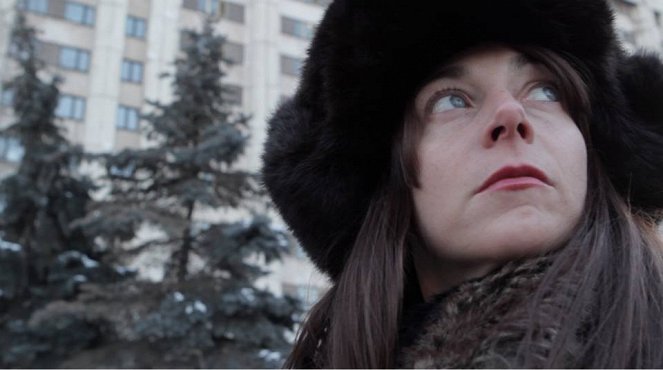Regie:
Mariano LlinásDrehbuch:
Mariano LlinásKamera:
Agustín MendilaharzuMusik:
Gabriel ChwojnikBesetzung:
Valeria Correa, Pilar Gamboa, Laura Paredes, Pablo Sigal, Julieta Vallina, Elisa Carricajo, Esteban Lamothe, Pablo Seijo, Luciana Acuña, Eugenia Alonso (mehr)Inhalte(1)
Ein Film, der mit sechs Episoden, die von verschiedenen Filmkunstformen inspiriert sind, der Kinogeschichte Anerkennung zollt. Jede Episode gehört einem Genre an. Die erste Episode könnte als B-Film betrachtet werden, also als diejenige Sorte von Film, welche die Amerikaner früher mit geschlossenen Augen gedreht haben und heute einfach nicht mehr drehen können. Die zweite Episode ist eine Art Musical mit einem geheimnisvollen Touch. Die dritte Episode ist ein Spionagefilm. Die vierte ist schwer zu beschreiben. Die fünfte ist von einem alten französischen Film inspiriert. Und die letzte Episode handelt von einigen gefangenen Frauen, die im 19. Jahrhundert, nach vielen Jahren bei den Indianern, aus der Wüste zurückkehren. (GRANDFILM)
(mehr)Videos (2)
Kritiken (1)
The exceptionality of La Flor consists in far more than its runtime, which is equal to a full season of an epic series (after subtracting numerous intermezzos and the forty-minute closing credits). It is a work that is unique on so many levels that dissertations could be written about it. Or you can simply enjoy how well made it is and how it can surprise viewers with something throughout its runtime and create subtle connections between individual segments, the result of which is that you do not feel as if you are watching a miniseries or anthology. ___ The prologue, in which the director introduces the structure of the entire film and sets forth the central theme of “what can still be told today and how?”, is followed by six episodes, each of which plays with the conventions of a different genre (a B-level horror movie, a melodramatic musical, a spy thriller, a film about film, a black-and-white remake of Renoir’s A Day in the Country, an experimental anthropological pseudo-documentary) and, as in a sweeping novel, frequently branches out into numerous subplots. Aside from viewers’ expectations, which of course are not fulfilled due to the fact that, for example, almost none of the episodes has an ending (thanks to which we also realise that we are primarily watching the actual storytelling process, with all of the vacillation that goes with it), and waiting itself becomes relevant during the individual episodes. For example, the third episode is based entirely on a Tarantino-esque delaying of the final confrontation between two hostile groups of secret agents. That delay, directly thematicised in individual flashbacks, does not take thirty minutes, but five and a half hours, which is done ad absurdum. ___ Thanks to the layered narrative, the polished style, the strong self-reflective dimension (which is strongest in the fourth episode, where the crew deals with how to continue further) and deviations from the established concept, watching La Flor is never dull or predictable for even a moment. It is not slow cinema requiring an extremely patient viewer, but a dense and entertaining multi-genre experiment with the possibilities of a long, jagged narrative in which more and more stories are constantly layered on top of each other (from what I saw, it is most akin to Gomes’s three-part Arabian Nights). Therefore, one of the most emotionally powerful and, in a certain aspect, purest and truest sequences is that from the fourth episode in which the female leads do not appear in any story, do not play roles, but only freely improvise in front of the camera (just like during the closing credits). ___ Despite the impression of an epic narrative freestyle work, piling up ideas originating on the fly, La Flor is a maturely crafted and inventively structured film whose individual parts organically interconnect certain stylistic techniques (e.g. refocusing between various action plans), well-developed motifs and (primarily) a quartet of astonishingly talented and photogenic actresses, whose acting art Mariano Llinás pays tribute to (and, at the same time, allows him to stand out in every nuance, as required by the various genres and acting in multiple foreign languages). As an expression of thanks for being involved in the filming, which took roughly nine years without breaks, the director gives the actresses a gift, which is the film itself – it is not a coincidence that his narrative scheme, which Llinás sketches out at the beginning, resembles a flower, la flor. ___ Whereas you merely watch other movies, you can experience an unforgettable weekend with La Flor. 90%
()
(weniger)
(mehr)
Galerie (21)
Photo © ARP Selection


